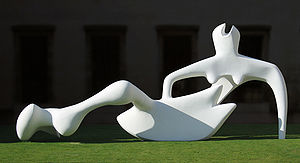- Organic abstraction
-
Organic abstraction is an artistic style characterized by "the use of rounded or wavy abstract forms based on what one finds in nature."[1] Historical examples of organic abstraction include: Isamu Noguchi, Table; Charles Eames, Eames Plywood Chair; Achille Castiglioni, 220 Messadro; Henry Moore, Reclining Figure; Eero Saarinen, Saarinen Stem Chair.
References
Categories:- Art movements
Wikimedia Foundation. 2010.

